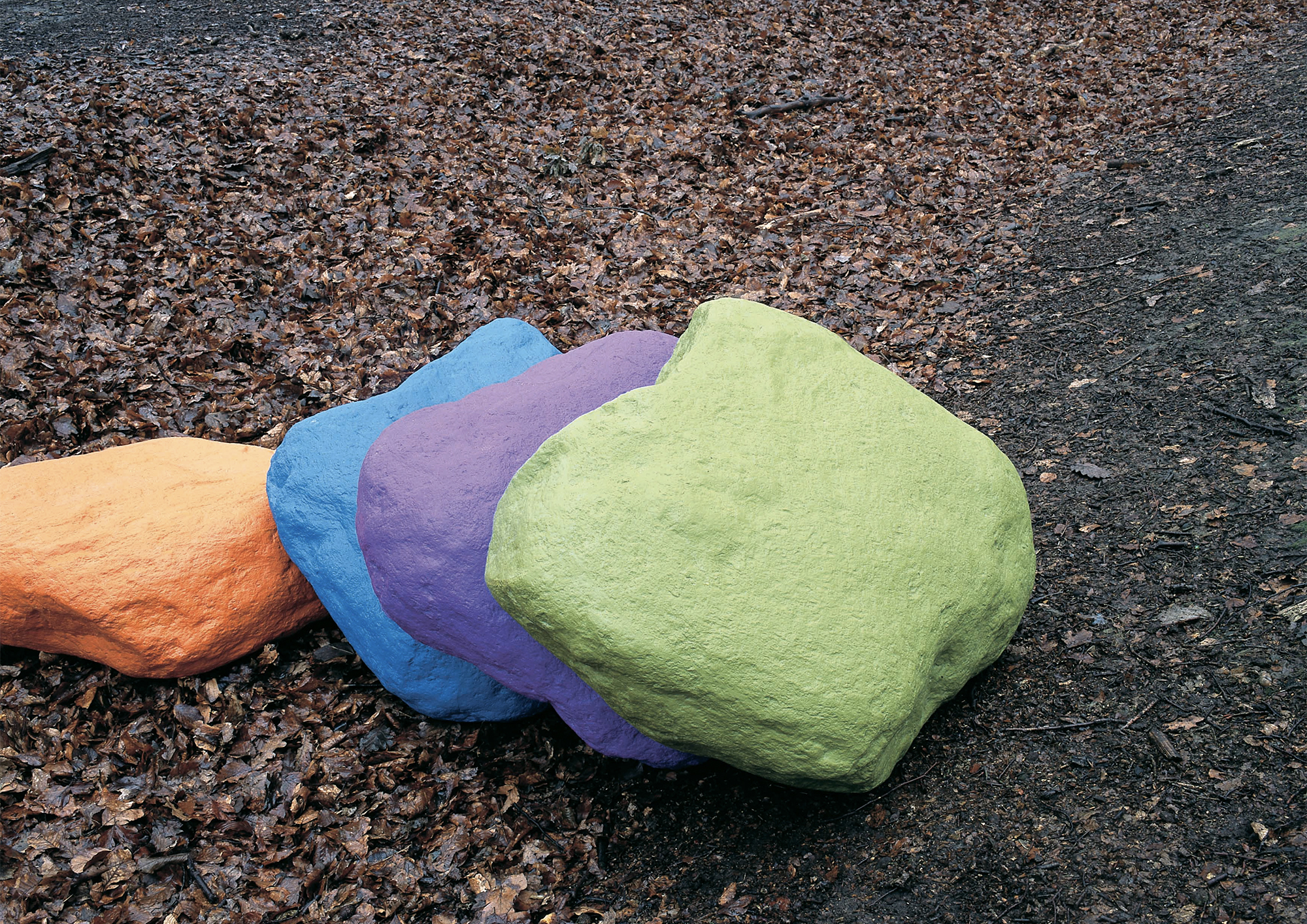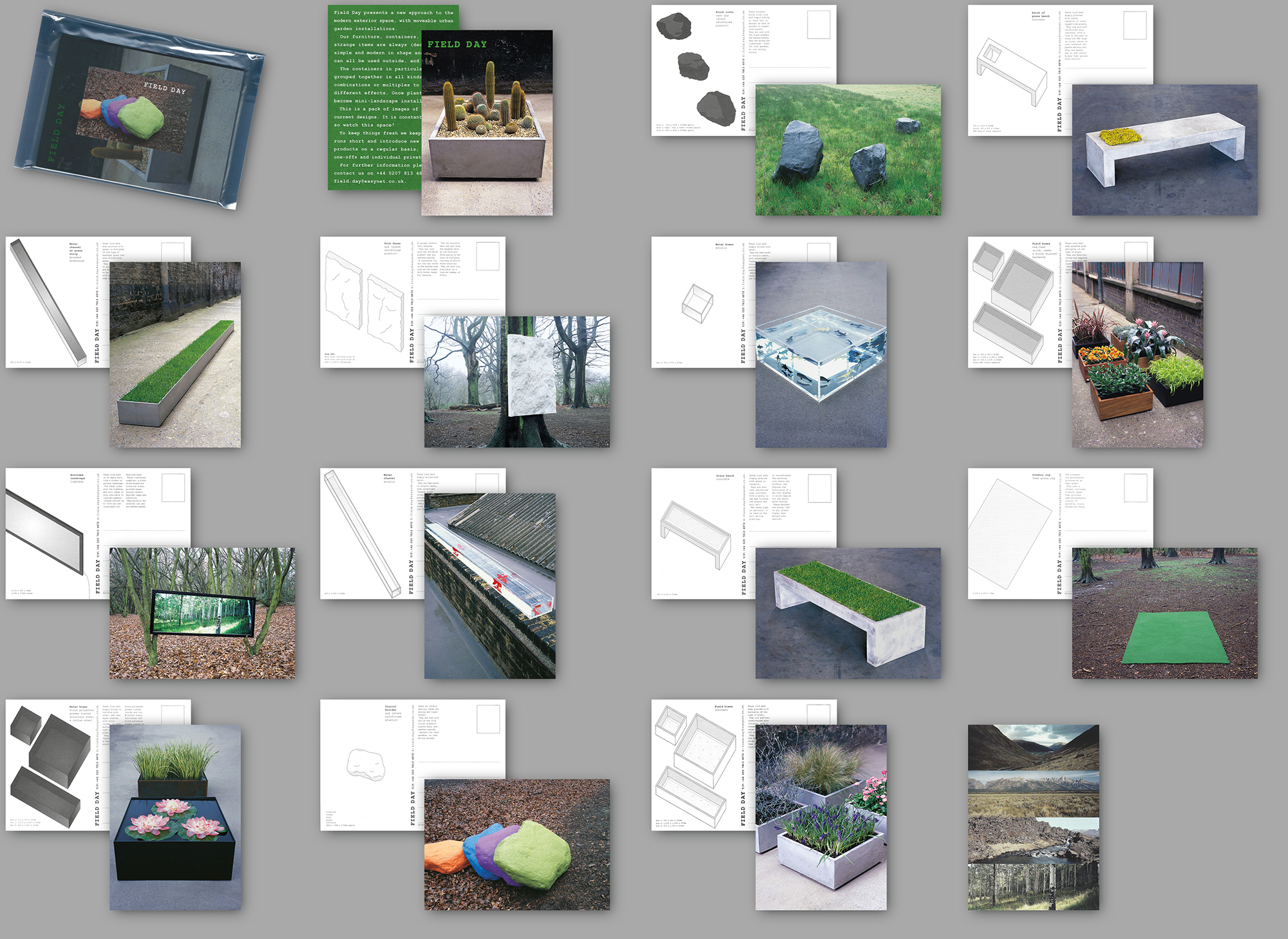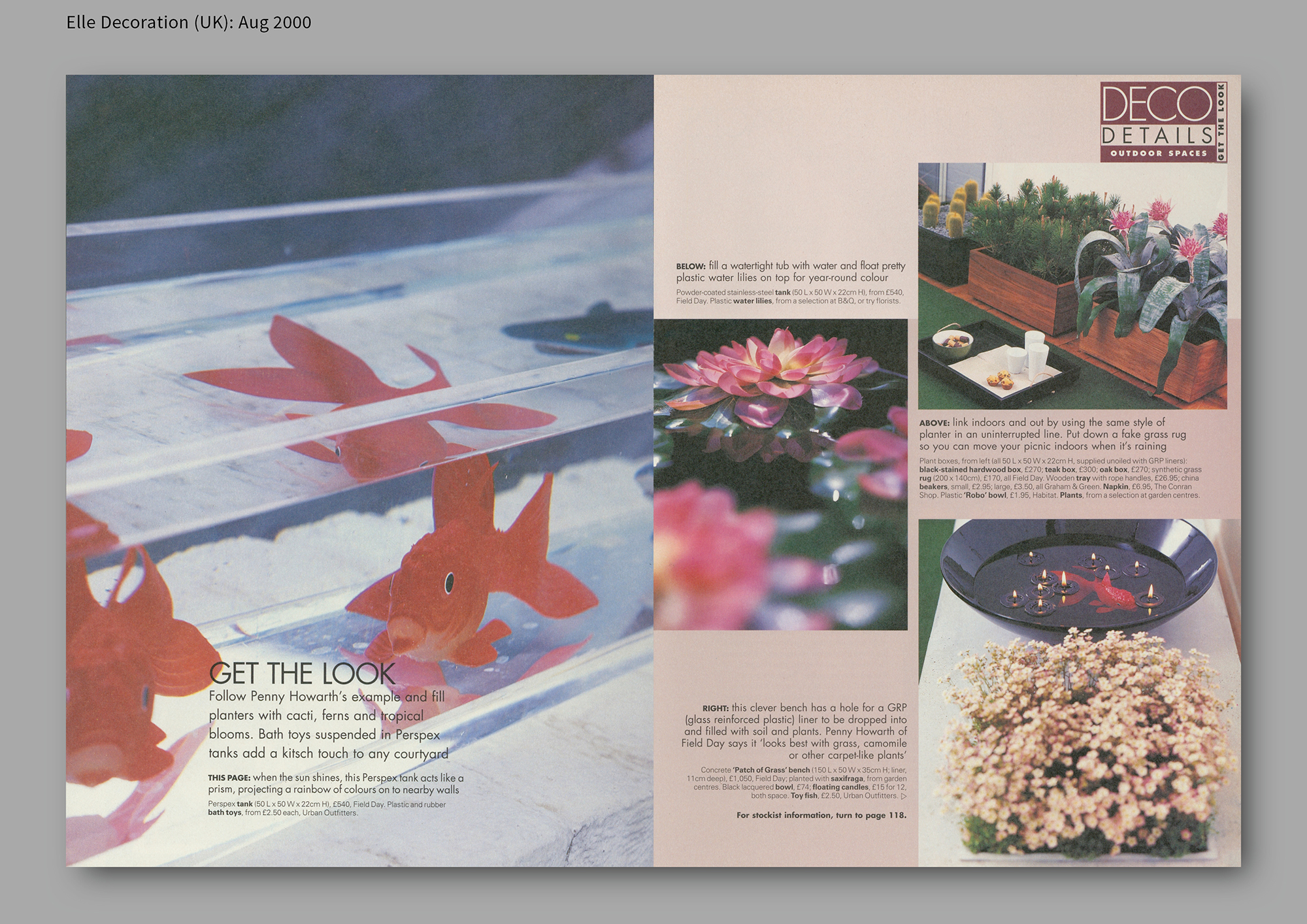Field Day
(1999-2004)Exterior design company
Founder, product and
graphic designer
Marketing/PR


Through Field Day I designed and produced small batch outdoor pieces which drew on elements from larger landscapes.
The objects were designed particularly with small urban spaces in mind. These were often spaces with no flower beds or direct sunlight, and perhaps surrounded by neighbouring buildings’ high walls.
The pieces were all exterior grade or weather-sealed, and manufactured in the UK in limited runs. They were exhibited at 100% Design with a Crafts Council award and at the RIBA Hardcore exhibition. They were sold through the company’s website as well as in concept/lifestyle stores Mint and SCP.
The objects were designed particularly with small urban spaces in mind. These were often spaces with no flower beds or direct sunlight, and perhaps surrounded by neighbouring buildings’ high walls.
The pieces were all exterior grade or weather-sealed, and manufactured in the UK in limited runs. They were exhibited at 100% Design with a Crafts Council award and at the RIBA Hardcore exhibition. They were sold through the company’s website as well as in concept/lifestyle stores Mint and SCP.

Borrowed Landscape: slimline lightbox with original photographic images (this birch wood and the mountain/prairie above were two of them), 2,225 x 897 x 45mm.

Rock Face: glass reinforced plastic (GRP), 840 x 1,188 x 150mm.
Neighbouring buildings’ walls in small spaces presented an opportunity to experiment with outdoor wall-hangings.
Borrowed Landscape was a play on the term for incorporating the background landscape of a garden into its composition. Mounted on a wall, the framed large-format images became a window to a larger landscape beyond.
Rock Face consisted of a pair of casts taken from the basebed face of the Portland Stone quarry face. These Ao wall-hangings were made out of glass reinforced plastic (GRP), making them strong and deceptively lightweight.
Borrowed Landscape was a play on the term for incorporating the background landscape of a garden into its composition. Mounted on a wall, the framed large-format images became a window to a larger landscape beyond.
Rock Face consisted of a pair of casts taken from the basebed face of the Portland Stone quarry face. These Ao wall-hangings were made out of glass reinforced plastic (GRP), making them strong and deceptively lightweight.




Patch of Grass Bench with planted chamomile: precast concrete bench with drop-in GRP liner, 500 x 1,500 x 230mm.
These concrete benches were part of a larger experimental approach to planting and ground materials. The Grass Bench, planted with turf, produced a small personal piece of lawn, or, with the cobbles, your own piece of Brighton beach. While the Patch of Grass Bench, planted with low, tactile and aromatic species like Chamomile or Thyme, would encourage the sitter to linger longer.
The simple shapes of the benches belied various invisible design features. Like chamfered feet to reduce chipping; the former’s hidden seat cavity (deep enough for soil to sustain grass) and steel reinforcement; and the latter’s concrete-coloured drop-in liner, making it barely visible when planted.
The simple shapes of the benches belied various invisible design features. Like chamfered feet to reduce chipping; the former’s hidden seat cavity (deep enough for soil to sustain grass) and steel reinforcement; and the latter’s concrete-coloured drop-in liner, making it barely visible when planted.

Grass Strip: brushed aluminium with rolled safe-edge, 220 x 3,000 x 130mm.
The idea of a small personal piece of lawn was further iterated with the Grass Strip. It challenged the notion of a lawn as an arbitrary planted surface beneath your feet by treating the turf as a piece of ornamental planting in its own right, accentuated by the long thin shape of the container.






Containers for planting and water were designed as moveable installations: pieces not built in to the ‘hard landscaping’ of a space, but using materials and proportions more often associated with that.
For planting, concrete and wood Field Boxes were so-named for creating mini ‘fields’, with the use of smaller plants and the landscape design method of multiple planting.
The water containers used materials that revealed water’s own visual properties1. The Water Channel shared the same proportions as the Grass Strip (above), enabling its transparence to fully reveal the interplay of light with the water. This worked particularly well when it was placed along a low wall or at the foot of a tall one. The black interiors of the Water Boxes evoked a highly reflective deep body of water, and were particularly effective for water planting.
For planting, concrete and wood Field Boxes were so-named for creating mini ‘fields’, with the use of smaller plants and the landscape design method of multiple planting.
The water containers used materials that revealed water’s own visual properties1. The Water Channel shared the same proportions as the Grass Strip (above), enabling its transparence to fully reveal the interplay of light with the water. This worked particularly well when it was placed along a low wall or at the foot of a tall one. The black interiors of the Water Boxes evoked a highly reflective deep body of water, and were particularly effective for water planting.

Glacial Boulders: weather-sealed GRP boulders cast in four colours from Scandinavian glacial boulder, 950 x 760 x 270mm.

Black Rocks: weather-sealed GRP black rocks, 710 x 500 x 470mm, 700 x 430 x 400mm, 900 x 540 x 520mm.
Like Rock Face (above), these GRP pieces were also cast from rocks, in this case as 3 dimensional objects. They were strong and lightweight, which was particularly useful in a space where weight or access was an issue.
Glacial Boulders were cast from one Scandinavian boulder and made in four colours, and when laid flat also provided informal seating. While Black Rocks came in three sizes, with one providing an informal seat or side table.
Glacial Boulders were cast from one Scandinavian boulder and made in four colours, and when laid flat also provided informal seating. While Black Rocks came in three sizes, with one providing an informal seat or side table.


One of my marketing tools for Field Day was this A6 pack of cards, with photographs2, drawings and information about each of the products. Its offset litho printing and tactile packaging gave it a collectible quality, something I could give out at exhibitions and to magazine journalists.
The pieces themselves got good editorial coverage in print magazines and publications. These are some sample pages from my press clippings book3.
The pieces themselves got good editorial coverage in print magazines and publications. These are some sample pages from my press clippings book3.


















1Small submersible solar/battery powered water pumps could be used in the water containers, concealed by water planting.
2Field Boxes, Grass Strip, Water Channel, Grass Bench, benches and water boxes were photographed by Bill Kingston; Rock Face, Borrowed Landscape, Glacial Boulders, Black Rocks and Grass Mat by Annabel Elston.
3My surname was Howarth at the time.
2Field Boxes, Grass Strip, Water Channel, Grass Bench, benches and water boxes were photographed by Bill Kingston; Rock Face, Borrowed Landscape, Glacial Boulders, Black Rocks and Grass Mat by Annabel Elston.
3My surname was Howarth at the time.